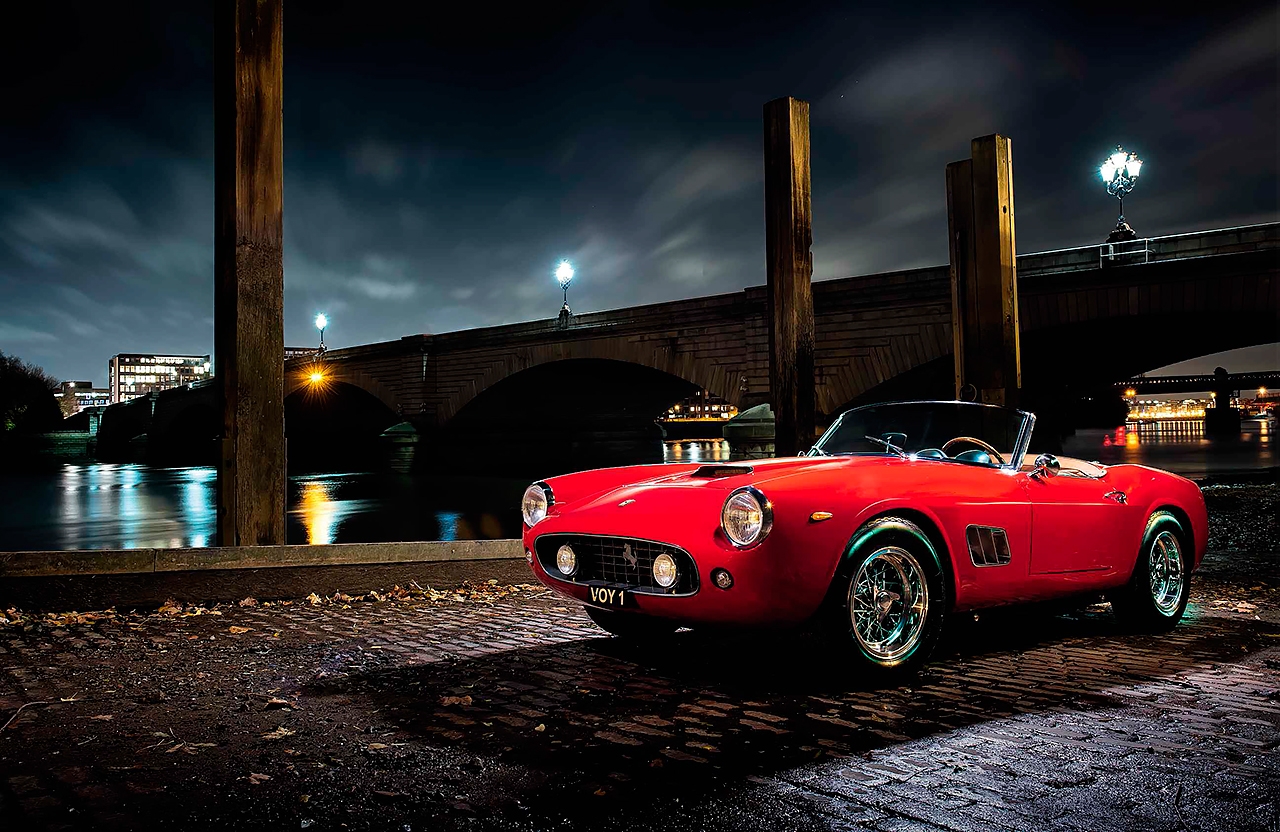
The State of California Ferrari California Spyder. Very few cars can compare with a Ferrari 250 California Spyder for desirability. But just what makes it so special? Words Mark Dixon. Photography James Lipman.
Driving the world’s most desirable convertible
PLUS All the 250s – and that V12
Beuller?… Beuller?… Beuller?…’ If you’re of a certain age, you’ll already have twigged the significance of that cryptic quote. It’s a line from the movie Ferris Bueller’s Day Off, released in 1986 and starring a rising young actor called Matthew Broderick. It also starred a Ferrari 250 California Spyder.
Well, actually, it didn’t – the car used in the movie was a glassfibre replica. Even in the mid-80s, a California Spyder was far too valuable to use in a low-budget flick. But it undoubtedly helped propagate the ‘Cal Spyder’ as the ultimate soft-top classic. If you doubt the potency of cheap movies, to misquote Noel Coward, then consider this: the replica Ferris Bueller Ferrari was auctioned in 2013 for $235,000. Not bad for a glassfibre lookalike.
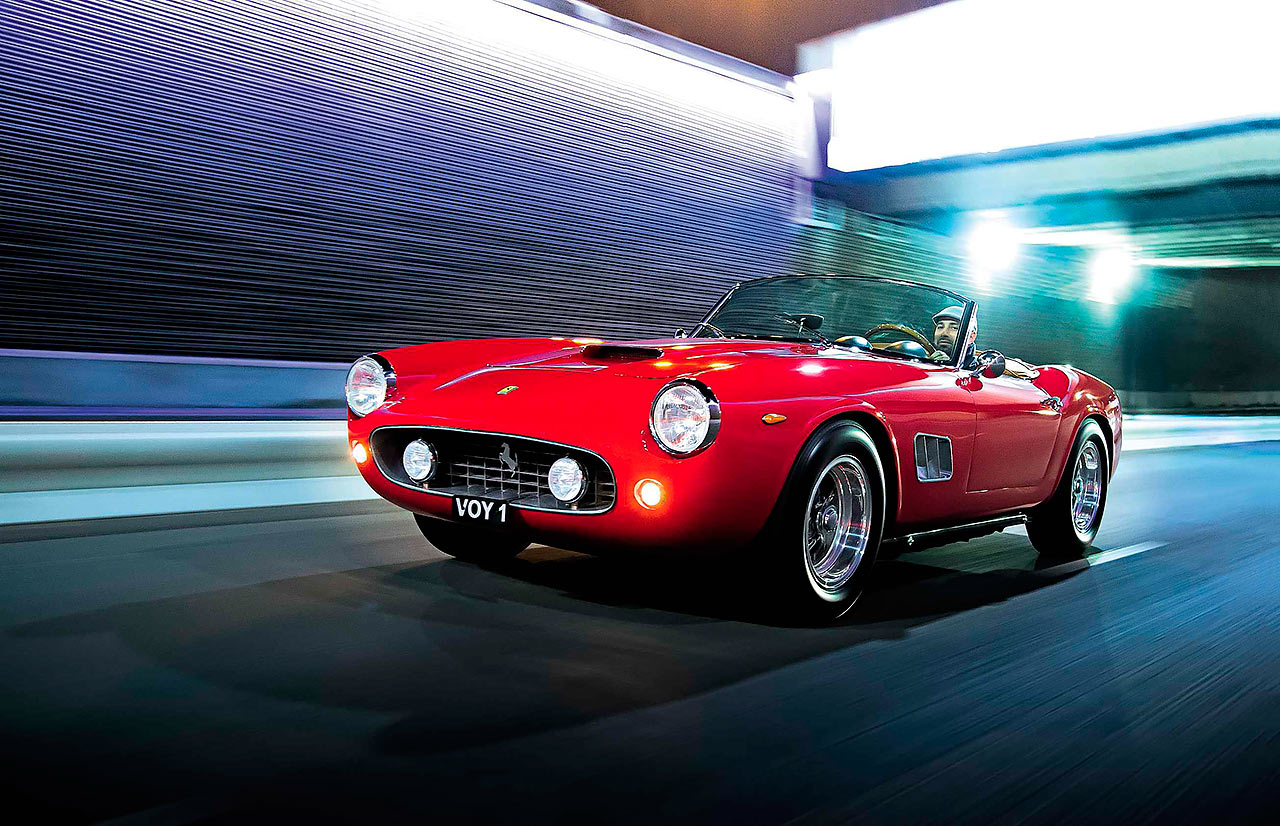
1961 Ferrari 250 GT California Spyder road test
Real California Spyders, of course, are worth a lot more. An awful lot more. The barn-find example from the Baillon Collection, featured on the front covers of Octane 140 and 149 (a double that’s unique in this magazine’s history, and which reflects the massive interest in the car) went under the hammer for €16.4 million, equivalent to £12,110, at Artcurial’s 2015 Rétromobile sale. That was for a car complete with rust, filler, a vinyl retrim, and non-original bumpers and hood frame.
What the Baillon car had in spades, though, was glamour, and that’s something you almost can’t put a price on. After a 250 GTO, a California Spyder is simply the Most. Desirable. Classic. Ferrari. Ever.
We say ‘almost’ but, of course, everything has its price, and Ferraris are no exception. Bonhams is hoping to raise over $10 million from the sale of our feature car at Scottsdale, Arizona, on 19 January. To put it bluntly, how on Earth can it be worth so much money?
‘It’s the iconic collector’s Ferrari,’ explains Swiss-based Ferrari historian Marcel Massini. ‘The name California alone says it all. Imagine one of these soft-top rarities on the French Riviera in the Swinging Sixties! All the stars and VIPs had one, and today it’s a must-have for the serious enthusiast.’
The owner of this particular car, chassis #2277GT, agrees, while arguing that there’s more to the California Spyder than good looks alone. ‘It’s the best open twoseater classic Ferrari,’ states Paul Michaels, whose London-based company Hexagon will be well-known to anyone who peruses the advertisements at the back of this magazine. ‘It’s simply the whole package: a 250 SWB with the roof chopped off.’ And Paul should know, having owned #2277GT for 11 years and driven it thousands of miles on European classic rallies.
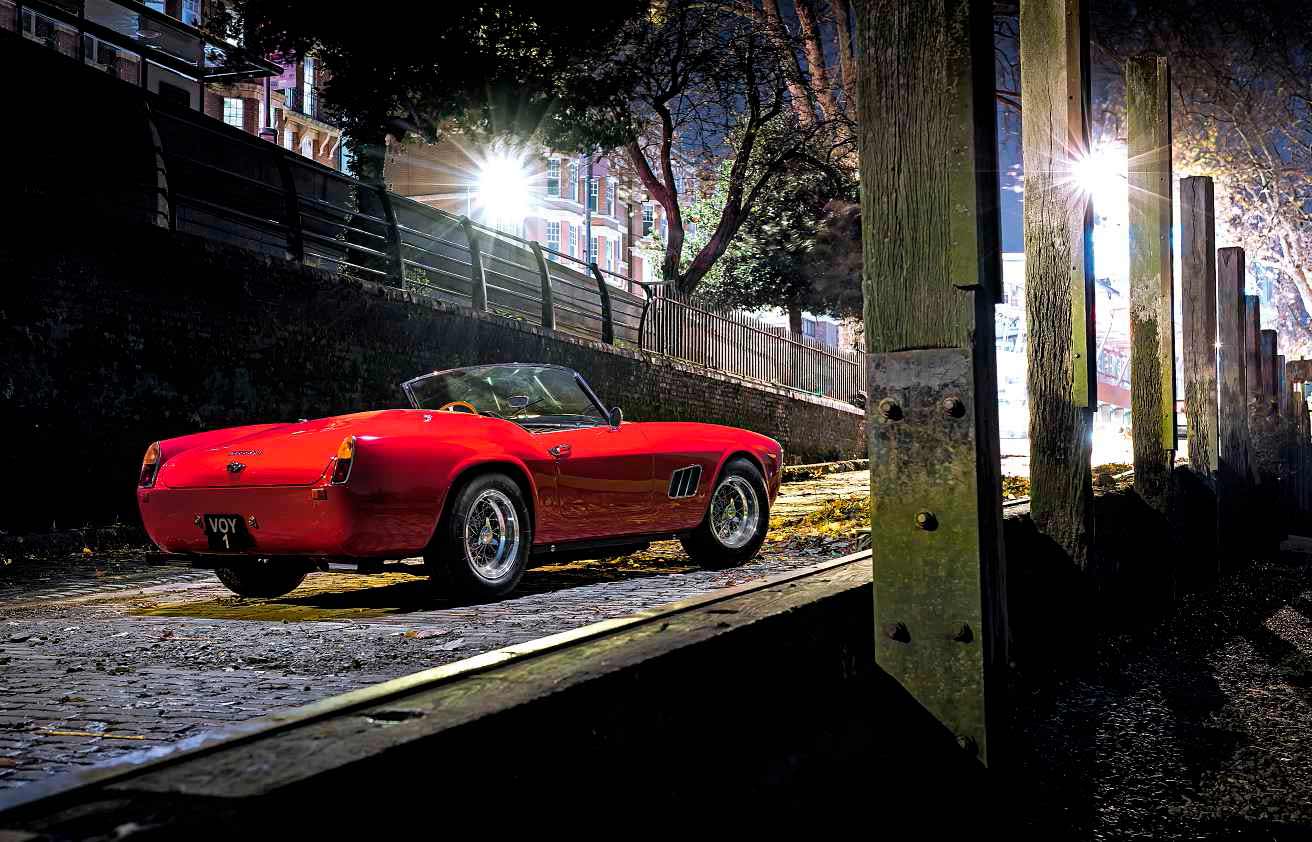
Left and below. Borrani wire wheels set off the otherwise understated Scaglietti coachwork; dashboard manages to be both functional and elegant.
While a California Spyder would indeed have been utterly at home on the French Riviera, it was really targeted at the USA, as its name suggests. The story goes that either Luigi Chinetti (the Italian-American who founded the North American Racing Team, or NART) or his West Coast agent Johnny von Neumann came up with the name, realising there was a market for a sporty Ferrari that would be equally at home posing in Santa Monica as it was hammering round the track at Laguna Seca.
Pinin Farina had already designed a 250-based soft top, revealed at Geneva in March 1957, and the prototype 250 Spider (with an ‘i’) was given to racing driver Peter Collins by Enzo himself – we featured this car in Octane 142. But the soon-to-be-dubbed California Spyder (with a ‘y’ – more on this in a moment) was commissioned from Scaglietti, which picked up on some Pinin Farina design cues such as the faired-in headlights, kicked-up rear haunches and louvred front wings to create its own interpretation of a ‘dual-purpose’ soft-top Ferrari. Scaglietti’s prototype was completed late in 1957 and delivered to Chinetti’s East Coast business partner, George Arents, early in 1958.
Arents himself was hardly the California’s greatest fan. In a letter written in 1989, he had this to say about Scaglietti’s production methods:
‘The only proper jig they had was a bronze effort to lock in the windscreen with the firewall. Otherwise, bodies were built by attaching lengths of welding rod to the frame and then bending them up so as to approximate such as fenders. From there an older artisan would beat hell out of a hunk of metal held in place by an apprentice, try it out, shake his head and resort to more beating until everybody agreed that “Ah! It was right,” weld it into place and start off with the next piece.’
Today, of course, we would argue that this rustic approach is all part of the California’s charm. These were cars built by real people, who relied on a good eye rather than skill at manipulating data on a computer. Ferraris of this era were literally works of art, and like anything handmade they will have imperfections. We call it ‘character’.
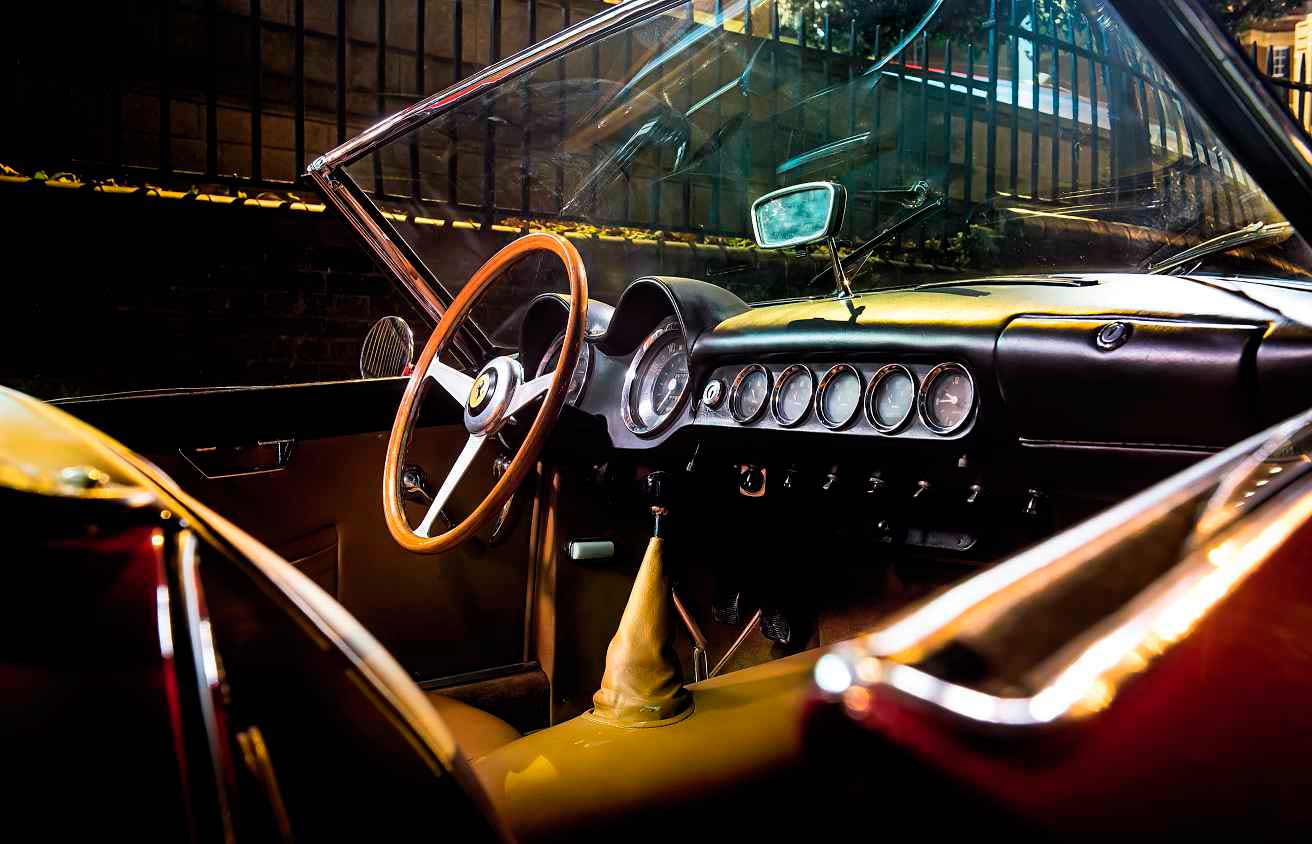
1961 Ferrari 250 GT California Spyder
Whatever the truth about Scaglietti’s standards of construction, there wasn’t much wrong with the underpinnings of the California Spyder. It was, as Paul Michaels succinctly puts it, ‘a 250 with the roof chopped off’, which meant that it retained the well-proven chassis of the so-called ‘Tour de France’ 250 GT Berlinetta and, of course, its extensively developed 3.0-litre V12 engine. We’ll gloss over that here because you can find out about the entire Ferrari 250 timeline, and read a preçis of the V12’s history.
For now, all you need to know is that the first iteration of the California had a longer wheelbase – 2600mm – than the second generation, of which Paul’s car is one, which had the 2400mm wheelbase of the new 250 SWB. Not surprisingly, Californias are therefore divided into ‘Long Wheelbase’ and ‘Short Wheelbase’ versions; 50 of the LWB Californias were made from mid-1958 to early 1960, and then a further 54 SWB versions up until early 1963; easiest way to tell them apart at a glance is that the LWBs had three front-wing louvres, while the SWBs had two. They could be bodied in steel or alloy, and could feature open or faired-in headlights; in fact, pretty much anything could be done to meet the customer’s requirements.
To add to the supply of California pub trivia, ‘Spyder’ is an old coachbuilding term, reputedly applied to the groom’s seat of a horse-drawn carriage because it was supported on a spidery framework. The word later came to be used for lightweight roadsters that had a spidery construction and, in the case of the California, ‘Spyder’ was always spelled with a ‘y’ rather than the more normal Italian usage of Spider with an ‘i’. This is despite the fact that the Italian alphabet has no letter ‘y’. Even so, contemporary brochures for the California are consistent in describing it as a Spyder, and who are we to disagree?
The minutiae of California specification or semantics were of little interest to their customers. Most purchasers were seduced by the style, with what we’d now term ‘celebrities’ quick to associate themselves with Ferrari’s new glamourpuss. To namecheck just a handful: movie director Roger Vadim bought SWB #2175GT for Brigitte Bardot; Bonjour Tristesse author Françoise Sagan acquired SWB #3021GT; Alain Delon owned the Baillon Collection car, SWB #2935GT; and James Coburn purchased SWB #2377GT, albeit secondhand, in 1964. You may recall this last car, for it was bought at auction in 2008 by British DJ Chris Evans for a then-incredible £5.6 million. Doesn’t seem quite so hard to believe, now.
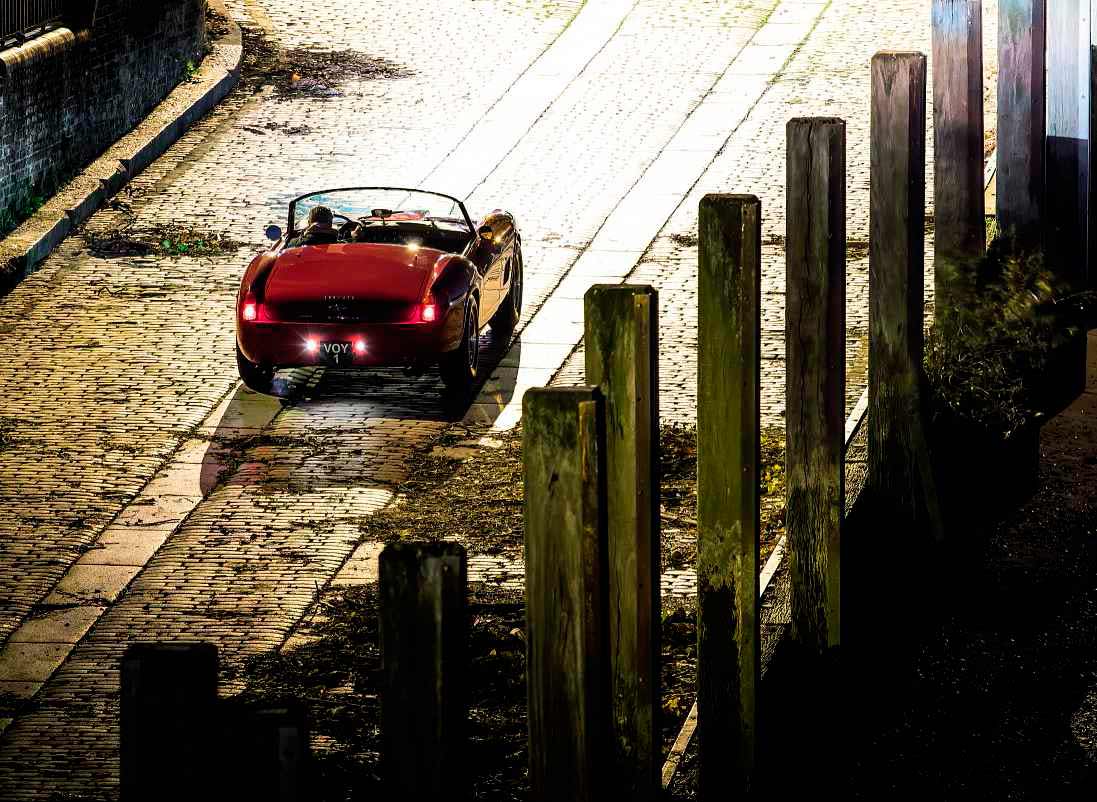
Left. Whichever angle you view it from, the SWB California Spyder is just gorgeous. This car has run without bumpers for much of its life, and that’s how the owner prefers it.
So the California Spyder was undoubtedly the poseur’s car of choice. A few buyers, however, were inclined to take full advantage of that Tour de Francederived chassis and engine, and among the most dedicated was a New York car dealer called Bob Grossman. He decided to enter his nearly new California for SCCA events in 1959, and to do so like a proper gentleman-racer. As Sports Cars Illustrated related: ‘In true-blue sports car fashion, he drives it to and from the races, complete with luggage in the trunk…’ The magazine went on to describe how, after practice at the circuit, he would reply to questioners who asked ‘How in the world can you race such a beautiful car?’ by simply stating ‘Because it’s meant to be raced!’
Grossman’s California dominated SCCA’s Class C in 1959 and was so successful that he was bumped up to Class B, where he gave the Chevrolet Corvettes a very good run for their money. At the end of the season he was able to say: ‘It may be expensive, but it’s reliable. In 13 races, I haven’t yet had any mechanical failure.’
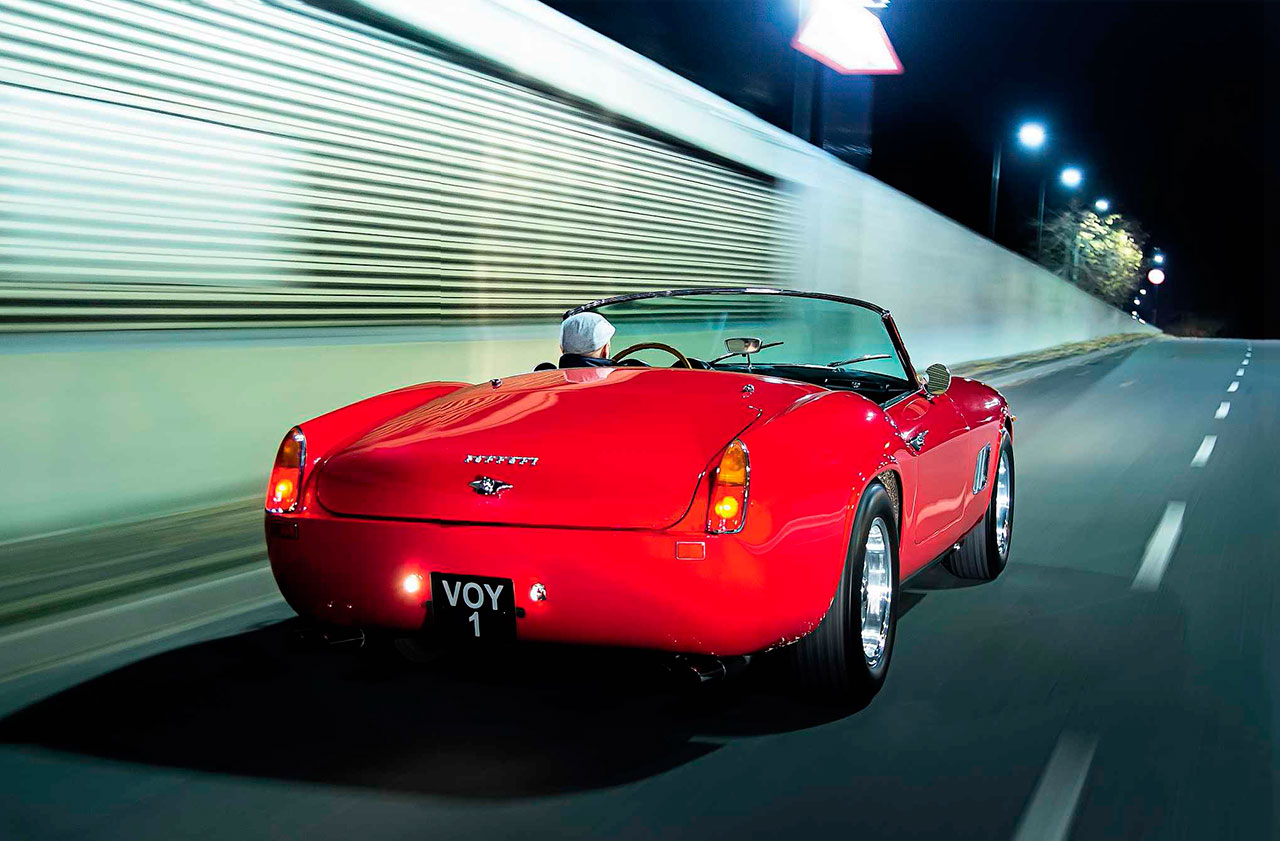
Right. Depending on rear axle ratio and tyre size, a SWB California Spyder was good for anything from 117 to 166mph, according to Ferrari’s statistics – but driving one is about so much more than sheer speed.
Grossman’s California high point was at Le Mans in 1959. Driving a brand-new example, LWB #1451 – so new that its primer had only been flashed over with top coat, and the unfinished seats were covered with ‘rags’ – he finished fifth overall. That was despite never having raced at Le Mans before, and being unable to converse with his French-speaking co-driver, who knew no English.
Fact is, though, that the California’s competition career was always going to be limited by the compromised rigidity of its open bodywork. As the Eeyore-ish George Arents put it, ‘Even as a casual racer, the whole works bent so because of its chop-top configuration as to make it a misery on the circuits’. Arents may have protested too much, but Bob Gross himself lost interest in the California as a race car once he’d been introduced to the fixed-head 250s, and he never progressed to the SWB version of the open car.
Handling may have been an issue on the circuits but reliability was always a California strong point, and Paul Michaels’ ownership of SWB #2277GT seems to bear that out. Paul states that the car has never let him down, while admitting that it has always been thoroughly prepared ahead of any longdistance event by specialists such as Netherlands-based Peter Roelofs and the UK’s own GTO Engineering.

This particular car is today, almost inevitably, finished in Rosso (as it was when Paul acquired it) but it was delivered new in Nocciola brown with Tobacco interior. The 11th SWB California built, it was displayed by Garage Francorchamps at the January 1961 Brussels motor show and was sold not long afterwards to Dino Fabbri, a Milanbased publisher. By 1968 it was in the USA, repainted red and retrimmed with a black interior; it then passed between various American owners until being bought by Paul Michaels at the start of 2006.
‘I had a beautiful steel-bodied 250 SWB GT at the time, and my wife and I had recently participated on an Italian road-rally in which there were three California Spyders,’ he recalls. ‘We came up behind one and my wife said, “Why are we in a fixed-head?” So I sold the GT, found a bit more money and bought this California. To me, it is the perfect Ferrari.’
Which begs the question, of course, as to why Paul is now selling it. His response is very straightforward: ‘It’s simply become too valuable to use on the kind of events that I enjoy, or to leave parked in London. Sad but true.’
Maybe London isn’t the ideal place to drive a California Spyder. But there’s something very special about piloting an open car through the city at night, and it doesn’t matter whether you’re in a Ferrari or a Fiat: your senses come alive in a uniquely invigorating way.
Like all classics, the California seems compact and almost dainty compared with almost every other vehicle that surrounds it. You feel you could stretch out and touch each extremity with your fingertips, and that gives confidence in traffic, even in the round-the-clock chaos that is London. It fires up instantly, as it has done throughout the photography session earlier, and within seconds of leaving our photo location on the banks of the Thames we’re mixing with the black cabs and doubledeckers on Putney Bridge.
The car is lively and agile, darting in and out of gaps in the traffic like a minnow between trout, while I try not to remember that this car has no bumpers or overriders to protect its voluptuous curves. (‘They were removed long before I bought the car,’ explains Paul Michaels, ‘and I much prefer it like that. Can you imagine a 250 Berlinetta fitted with bumpers?!’) That vulnerability aside, the Spyder makes the perfect city car. It steers nicely, with enough feel and feedback to be comfortable without being nervous, and the four-speed gearshift is positive and satisfyingly mechanical in action. There are four-wheel disc brakes, so no worries on that score, and because you’re rolling in a mobile bathtub you’re treated to the full surround-sound of that Ferrari V12, its crisp blare bouncing back from shop windows and underpass walls.
Fact is, whether you live in London, LA or Little Plumpton (it’s in Lancashire), the California Spyder will never disappoint. As Ferris Bueller put it in 1986, with all the accumulated wisdom only a teenager can possess: ‘It is so choice. If you have the means, I highly recommend picking one up.’ He’s not wrong.
THANKS TO Paul Michaels, Cameron Mitchell, Philip Kyriacou and Ben Horton. Bonhams will auction #2277GT on 19 January at Scottsdale, AZ; see bonhams.com/scottsdale.
TECHNICAL DATA 1961 Ferrari 250 GT California Spyder
Engine 2953cc all-alloy V12, OHC, triple Weber 36 DCL carburettors
Power 280bhp @ 7000rpm
Transmission Four-speed manual, rear-wheel drive
Steering Worm and sector
Suspension Front: double wishbones, coil springs, hydraulic dampers. / Rear: live axle, semi-elliptic leaf springs, hydraulic dampers.
Brakes Discs
Weight c1200kg
Performance Top speed typically 125mph. 0-60mph 6sec (est)
‘Celebrities were quick to associate themselves with Ferrari’s new glamourpuss’
‘There’s something very special about piloting an open car through the city at night’
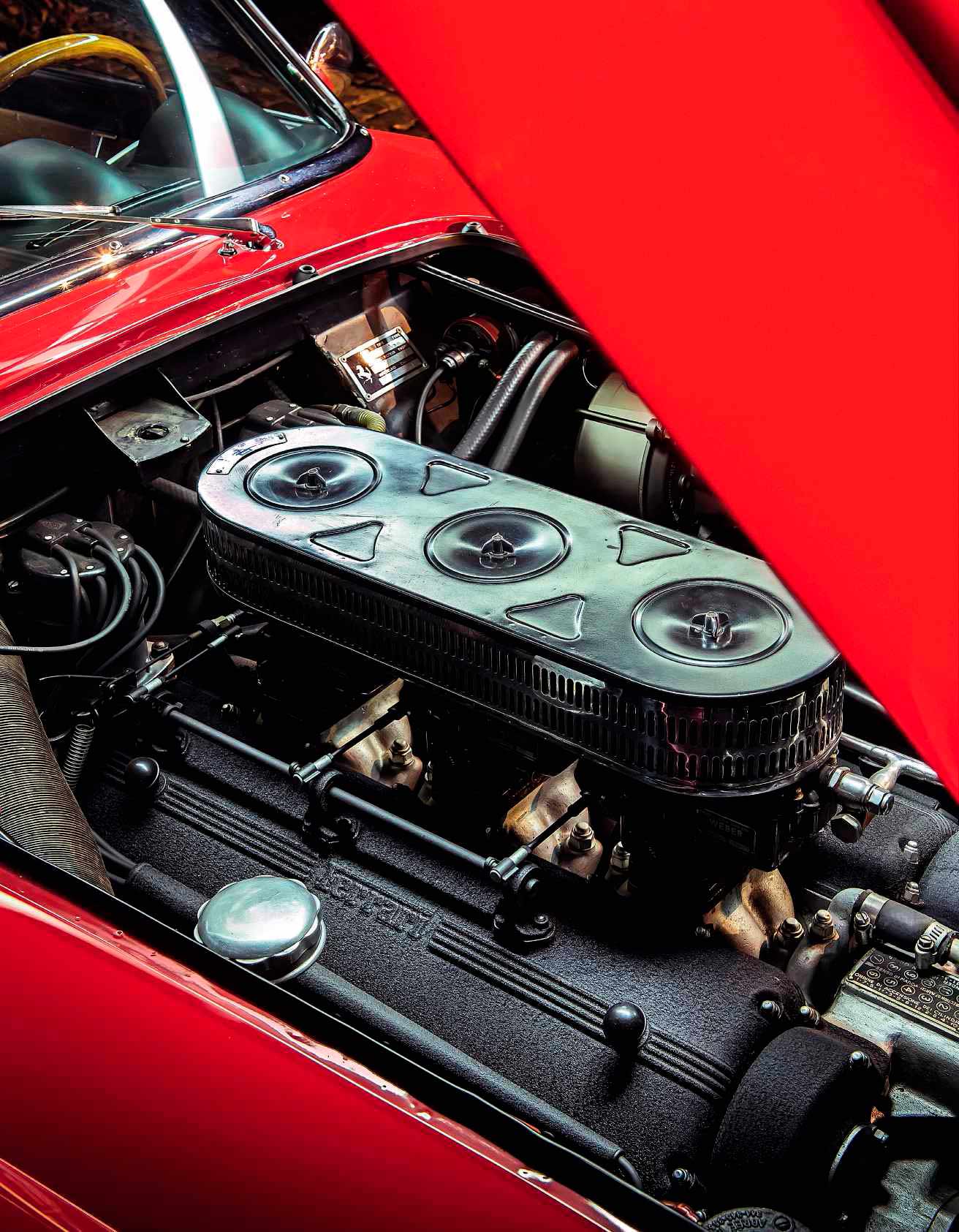
Facing page and right. Ferrari’s superb Colombodesigned V12 is at the heart of what makes a California special. Yes, there’s no folding hood, but that’s why it looks so good – and this car is about style, above all.





